The Smithsonian’s new American Science: From Darwinian-based Aryanism to Modern Anthropology
And How Smithsonian Father Lewis Henry Morgan’s Theory of Social Evolution Directly Inspired the works of Frederick Engels and Karl Marx

“In the inevitable course of human history the individual races will probably fade out and disappear, and the world will be filled to overflowing with a generalized race in which the dominating blood will be that of the race that today has the strongest claim, physically and intellectually, to take possession of all the resources of the land and sea.”
- William Henry Holmes “Random Records of a Lifetime”, Chief of the Smithsonian Institute’s Bureau of American Ethnology (John Wesley Powell’s successor), head curator of anthropology at the U.S. National Museum, chairman of the Division of Anthropology of the U.S. National Museum, director of the Smithsonian American Art Museum.
Beginning in the late 1830s, Albert Gallatin devoted more than a decade to devising a “science,” which would justify the portrayal of the American Indian as a natural savage, at a developmental stage through which all “civilisations” have had to traverse in their mental evolution. Thus, the American Indian was encouraged to be regarded as not inferior to the European races but simply operating within an earlier developmental phase.
What this also signified, was the impossibility of integration with western civilisation.
As Henry Rowe Schoolcraft, so-called “Indian expert” and assistant to Gallatin, would later put it, “America is the tomb of the Red man.” This outlook made to look sympathetic and tragic though inevitable, was in fact a conscious policy of genocide that would justify itself through the pseudo “science” of anthropology shaped by Gallatin.
In 1842 Gallatin, created and became the first president of the American Ethnological Society, a sister organization to European ethnological societies. Chaitkin writes: “The group served as an adjunct to the Young Europe, Young Switzerland, Young Italy, Young Germany, Young England, and Young America projects of Britain’s Lord Palmerston [which were all proto-fascist movements].”[1]
Henry Schoolcraft’s aristocrat father-in-law, then, was both a commercial and espionage teammate of Albert Gallatin, manager of John Astor’s affairs, when Schoolcraft joined the family. For the next several decades, Henry Schoolcraft spent a great deal of time collecting creation myths amongst the indigenous people, and subsequently publishing a concoction of creation myths as authentic Indian cultural and religious data which were meant to further serve the Gallatin anthropological school’s narrative.
Chaitkin writes in “Treason in America”:
“In August of 1846 Henry Schoolcraft attended an extraordinary meeting of the ‘New Confederacy of the Iroquois’ in Rochester, New York. There were no actual Indians present, only white men in Indian costumes. Besides Schoolcraft, another prominent guest and speaker was Giles Fond Yates[50], Lieutenant Grand Commander of the Scottish Rite of Freemasonry, Northern Jurisdiction. Yates was an archeologist, a newspaper editor, and the delegate of the Scottish Rite’s Swiss grand master, JJJ Gourgas, for dealings with the secessionist underground in South Carolina.
This strange assembly would launch Gallatin’s new science in America. In his keynote, Henry Schoolcraft called upon the ‘braves’ to study America’s ‘free, bold, wild, independent, native race.’ To create a new scientific and literary tradition, they must create an ‘intellectual edifice…from the broad and deep quarries of [our] own mountains.’
‘No people,’ Schoolcraft warned, ‘can bear a true nationality, which does not exfoliate…from its own bosom, something that expresses the peculiarities of its own soil and climate.’ [a blood and soil reference]
Were these odd students of the Indian supposed to inquire into the history of the native people, to learn of their past accomplishments so that their future could be assured through integration? No – the Indian was dying, his memory was to be preserved by studying his present habits and his cults, as one studies the habits of animals who, after all, have no history in the human sense. In Schoolcraft’s words, ‘America is the tomb of the Red Man.’
What was this pretend ‘Iroquois Confederacy,’ thus commissioned by Messr. Schoolcraft and Yates to start a new American science? The question is important because
1. The organizer of the group, Lewis Henry Morgan, went on to fabricate a theory of the social evolution of humanity, which was adopted by Karl Marx as the basis of modern Communism’s view of world history; and
2. Morgan’s method of simultaneously bullying and ‘advocating the savage’s cause’ was to be the treacherous method of the anthropologists, of whose science Morgan is generally considered the American founder.” [emphasis added]
Thus, Lewis Henry Morgan, Albert Gallatin and Henry Rowe Schoolcraft, with the Scottish Rite in the background, shaped the foundation for what would become ‘the science of anthropology.’
Lewis Henry Morgan (1818-1881) was born in Aurora, New York the son of a wealthy state senator and masonic leader. The western New York region during that period has been dubbed the “burnt-over district” because cult leaders swept through the area for many years.
Morgan himself would have a freemason background, including founding the Order of the Gordian Knot (appropriating the building and costumes of the abandoned Aurora’s masonic lodge during the period of the anti-masonic fury). In the summer of 1843, Lewis Henry Morgan changed the name of his group to the ‘Grand Order of the Iroquois,’ the branches in the several towns took the names of the various tribes of the actual Iroquois confederation, and Morgan himself became the chief, Skenandoah. Henry Rowe Schoolcraft would later join Morgan’s secret society as Alhalla, the Iroquois prophet. (For more on this see Part III of “The Shaping of a World Religion: From Jesuits, Freemasons & Anthropologists to MK Ultra & the Counter-Culture Movement”)
Morgan would write in his League of the Iroquois (1851):
“The Aryan family represents the central stream of human progress because it has proved its intrinsic superiority by gradually assuming control of the earth…The passion of the Red man for the hunter life has proved to be a principle too deeply inwrought to be controlled by efforts of Legislation…The effect of this powerful principle has been to enchain the tribes of North America to their primitive state…We have here the true reason why the Red man has never risen, nor can ever rise above its present level…At this point the singular trait in the character of the Red man suggests itself, that he never felt the power of gain. This great passion for civilized man never aroused the Indian mind. It was doubtless the great reason for his continuance in the hunter state, for the desire of gain is one of the earliest manifestations of [the] progressive mind. In a word it has civilized our race.”
President Polk carried out an expulsion policy and hundreds of terrorised Native Americans died on the exile trail westward. Taking advantage of the vulnerable and desperate situation of the Native Americans under these expulsion campaigns, Lewis Henry Morgan, under the close supervision of Henry Schoolcraft, interwove a melange of manipulated creation myths to the shook-up tribesmen about their family customs and their religious beliefs to justify why their people were suffering such hardship. Morgan was to combine the symbols and lore learned or concocted in these interviews with Native Americans, with a certain amount of rewarmed Jesuitical embellishment. With this formulation, Morgan would write the pioneering American volume of anthropology The League of the Iroquois, in 1851, followed by Ancient Society, published in 1877.
Morgan’s Evolutionary Science of Extermination
It was mainly through the work of Morgan’s League of the Iroquois and Ancient Society (what would become the bible of the Smithsonian Institute and Bureau of Ethnology), that has justified the anthropological view of human evolution and the evolution of civilizations that is prevalent today, and can be summarised as the following:
1. Social and technological evolution is gradual.
2. Not all societies develop at the same rates.
3. Some societies are superior because of their racial stock, and have thereby developed superior social and family institutions.
4. It is wrong to change or improve the lesser races because they are not mentally equipped for it. They must develop at their own rate.
5. Protecting them from losing their primitive ways is the burden of the superior races.
6. America’s then-evolving superiority as an industrial nation was due to its special mix of Anglo-Saxon racial traits, lusts for increasing its acquisitions and superior family institutions.
Morgan was not interested in an actual honest study of the Iroquois or any other Indian tribe but rather was interested in how to create a romantic myth that could be used to portray Indians as natural savages. This would in turn become a double-edge sword that could be used by the racist imperialists to justify why integration was not possible and thus extermination the only true solution. This same theory would also later form the basis for why anthropologists and environmentalists would insist that tribes be kept in their “pure” form, something that had never existed in the romanticised form imagined - and remain “uncorrupted” from the vices of western civilization, despite the contrary demands of the Indian tribes themselves who wished to no longer live in abject poverty. Recall the Trail of Tears disaster, wouldn’t both imperialists and purists agree that such a policy was the right course?
It is no coincidence that Morgan’s work would combine both a racist and Romantic view of the Indians. As the British imperialists had already done in the Orient, including its relations most notably towards India and Tibet, a simultaneous desire to both emulate and subjugate its “exotic” subjects. Or why the Nazis in turn would be obsessed with the mysteries of Tibet, and were great fans of German Romanticism, most notably in the romantic portrayal of German paganism in Wagnerian operas. This is not a paradox. “Romantic culture rejects science and truthfulness for the enthrallment of appearances, the deification of distinctions, and the mystification of the arbitrary.” [2]
Anton Chaitkin writes in “Treason in America”:
“We may now return to the extraordinary meeting, in August 1846, where Schoolcraft and Yates, representing Albert Gallatin and Scottish Rite masonry, commissioned Lewis Morgan and his white Indians to start a new science… Over the coming decades the Smithsonian would be the central vehicle for the new science, which would take on an increasingly open anti-civilization character as the work of Lewis Henry Morgan became the gospel of ancient social studies.
…How could the European oligarchs cover up the fact that the Indians had had a higher culture in the past, and that they, like all human beings, were susceptible of rapid cultural advancement?
Several theories were advanced. First, that the mounds, forts, etc. were so marvelous that these ‘dirty redskins’ could not possibly have built them, so Vikings or some of the lost tribes of Israel must have come to America, built the structures, and gone away. The recent variant of that theory is that aliens on flying saucers built the cities of the Latin American Indians, and perhaps even created mankind. Another theory stated that ancient Mexicans came north, did the construction, then left it to the lowly Indians.
The final, now hegemonic anthropological lines was advanced by Albert Gallatin himself: the structures show nothing ‘indicative of a much more advanced state of civilization than that of the present’ Indians. The public should simply pay no attention to the ancient monuments…which were, in any event, fast disappearing in the midwestern march of settlement.
…[The] mechanical concept of man’s fate was most fully developed in Morgan’s book, Ancient Society, first published in 1877. Frederick Engels, in The Family, Private Property and the State, published in Switzerland in 1884, extolled Morgan for providing the ‘key’ to primitive society, an ‘independent, scientific’ foundation for Engels’ and Marx’s materialist view of human history.”
…
Contrarily, Morgan provided a two-edged propaganda tool for empire, positing the ‘natural’ climb through long ages of night, which each branch of the human family must make. In this view, if the Anglo-Saxons have made their half million year climb to civilization, while others such as the American Indians, or the people of Africa or India are reduced to backwardness, this is only their natural state, not a result of colonial or any other political factors. An imperialist who has falsified or buried the historical record may say with impunity, ‘the people of Indian will be ready for self-government in another 40,000 years, after they have gone through the appropriate stages…’
On the other hand, the people of the anthropologists’ home culture are beguiled by the anti-historical study of the noble savages, whose ways [we are led to believe] are purer than ours, and perhaps we should learn to do without science, cities and excessive reason as they do? This became the theme of twentieth century anthropology and its child, Environmentalism.” [emphasis added]
Though vehemently anti-Catholic in his writings, Lewis Henry Morgan would nevertheless paid homage to the Jesuits:
“The privations, and hardships endured by the Jesuit missionaries, and the zeal, the fidelity and devotion, exhibited by them, in their efforts for the conversion of the Indians, are unsurpassed in the history of Christianity. They traversed the forests of America alone and unprotected…they passed the ordeal of Indian captivity, and the fires of the torture…but in the midst of all, they never forgot the mission with which they were intrusted. The fruits of these labors of Christian devotion are yet visible among the descendants of ancient Iroquois; for the precepts spread among them by the missionaries are still in the Indian mind, and many of them have been incorporate by them into their own religious systems. The intercourse of the French Jesuits with the Iroquois furnishes, in some respects, the most pleasing portion of their history.”[3] [emphasis added]
After all, the Jesuits had set the stage and written the manual on cultural and spiritual manipulation. Morgan was simply following the path already cleared by the Jesuits. It was the Jesuits who had gone to live among the tribes in newly occupied colonial areas (Canada, Paraguay, Asia), and who had been accepted as the brothers of the Indians. It was the Jesuits who had skillfully portrayed their religion as so value-free as to accommodate itself to any system of belief. Recall the Jesuit maxim “All things to all men.” The Jesuits were so successful in this that they were even adopted into the tribal leadership. They then played a mediating role with the outside world of fur traders, liquor merchants, and colonial military officials.
The Jesuits educated the tribe about its ‘uniqueness’ and hence unsuitability to be integrated into Western scientific culture, or agricultural settlements, recall the Master of Life religion. [See Part I of the series “The Shaping of a World Religion: From Jesuits, Freemasons & Anthropologists to MK Ultra & the Counter-Culture Movement.”]
They formulated for the tribes plausible stories, about its origins and the significance of its customs. The Jesuits’ informants assumed increasing power and began to direct the tribe. They created a ‘native’ oligarchy with a mix of former, Jesuit-filtered rituals and pseudo-Christian concepts. (Recall in Part II of the series “The Shaping of a World Religion”, that William Sargant acknowledged that the Haitian voodoo deities, the loa, had been greatly influenced by Jesuit manipulations.) This ‘native’ oligarchy was most clearly seen with the Jesuits in Paraguay who had set up an iron totalitarian system with Indian slave laborers.
On that note, this explains a great deal in what influenced the decision of the Smithsonian to choose as their logo a 16 ray sun, exactly half the rays portrayed in the Jesuit Order logo - likely not a coincidence…

Chaitkin writes in “Treason in America”:
“Lewis Henry Morgan recommended Iroquois worship as ‘in many respects far above the highest conceptions of ancient philosophy,’ with an object less ‘vague and indefinable’ than that of ‘Socrates and Plato’; while monotheism to him was only a slightly evolved variant of such pagan worship.
But there is a fundamentally troubling aspect of this line of reasoning. The religious and other culture of the Iroquois seems to have been wholly reorganized under the European colonial regimes. The Iroquois confederation was armed by Europeans to become an imperial police force over other tribes throughout eastern North America. And certain forms of Mother Earth religion, such as the White Dog cult – atonement through the worship of a dead dog – first appeared around the year 1800!
Such pagan worship may, to some people, have much to be recommended. But whose religion was it?”
A Living Museum of Mankind: America as the tomb of the Red man
At this August 1846 meeting of the ‘New Confederacy of the Iroquois’ in Rochester, New York, Henry Schoolcraft would also remark that in constructing its “intellectual edifice” America must draw “from the broad and deep quarries of its own mountains, foundation stones, and columns and capitals, which bear the impress of an indigenous mental geognosy.”[4]
What Schoolcraft meant by this was that the present day Native American Indians were to be treated as having a distinct “mental geognosy” and that they were “walking statues” of a sort, representative of an archaic mental age that had miraculously been preserved for the careful study and dissection by “scientists.”
The Native American Indian was seen through this lens as the antiquarian remains of the Old World. The White man had superseded the Red man in America, and thus was obliged to preserve the memory of the latter. This is what Schoolcraft meant by his statement “America is the tomb of the Red man.”
Eight days after his address in Rochester, Schoolcraft sent to the Board of Regents of the new Smithsonian Institution a “Plan for the Investigation of American Ethnology,” presented at its first meeting in September. In this plan for what would become the field of American Ethnology, Schoolcraft proposed several major areas of activity for the Smithsonian Institution: support for a “Library of Philology”; archaeological investigation, particularly of the ancient earthworks of the Mississippi Valley; and material collections from living tribes to create a “Museum of Mankind.”
After a brief, tantalizing reference to the mysteries of the continent, he urged “the scrutiny of exact observation and description…under the lights of induction and historical analysis…to enable us to appreciate and understand our position on the globe.” Schoolcraft’s optimism embraced various subfields of the science of man: physiology, history, archaeology, geography, and geology. But he stressed languages a “more enduring monument of ancient affinities than the physical type” and called attention to the study of mythology.
Gallatin would also stress that American languages showed clear signs of primitive origins. He interpreted as their having derived from “natural causes,” which he claimed indicated that the Native Americans had not degenerated from a higher state, in opposition to the archaeologists’ findings of the mounds from past ancient civilizations in the United States.
This interpretation of the Gallatin school, imposed onto the Native American cultural identity that no past history participated in advanced civilisation existed, despite such massive evidence to the contrary such as the mounds of Cahokia, relics of a great ancient civilization in the Mississippi region. (see Part III of the series “The Shaping of a World Religion: From Jesuits, Freemasons & Anthropologists to MK Ultra & the Counter-Culture Movement”).
From Lewis Henry Morgan to Frederick Engels and Karl Marx and the Smithsonian’s Blood and Soil Doctrine
The work of Lewis Henry Morgan would further this line of thought and would move American anthropology from primarily historical inquiry into the origins and early relationships of the different peoples of the globe, to “scientific” classifications, or rankings, of humanity in evolutionary stages of social, mental, and moral development. It would be a class system, a “scientific” hierarchy of human mentation. Morgan's own career, from League of the Iroquois (1851) to Systems of Consanguinity and Affinity of the Human Family (1871) to Ancient Society (1877), marked milestones in this transition from history to stage classification and would form the theory of social evolution of humanity.
Thus, Lewis Henry Morgan who is officially recognised as the father of anthropology by the Smithsonian’s own account of the historical emergence of the new science “anthropology,” was also what would form the basis of modern Communism’s view of world history and directly inspired the work of Frederick Engels and Karl Marx, as per Engels himself. The “mechanical concept of man’s fate was most fully developed in Morgan’s book, Ancient Society, first published in 1877. Frederick Engels, in The Family, Private Property and the State, published in Switzerland in 1884, extolled Morgan for providing the ‘key’ to primitive society, an ‘independent, scientific’ foundation for Engels’ and Marx’s materialist view of human history.”[5]
This affinity of Engels to Morgan’s promotion of Aryan evolutionism should not come as a surprise since Engel’s roots had always remained within the Young Europe movement.
Anton Chaitkin writes in “Treason in America”:[6]
“…the Young Germany movement, set up in Switzerland in 1831 by British foreign minister Henry Palmerston, its thousands of refugee members and operatives ranging back and forth from its Swiss base. This was the training ground for the young Frederick Engels.”
We can glean a much greater insight into the mission of Lewis Henry Morgan’s work be reading a letter to Morgan from the post-Civil War editor of the Nation magazine, Wendell P. Garrison (son of the abolitionsist William Lloyd Garrison):
“The only way to meet [those resisting Darwinism’s survival-of-the -fittest concepts] is to say outright that a theology resting on atonement called for by a supposed angelic creation of mankind and subsequent fall must take the consequences of building on the grounds of science…[Our actual opponents] are the Paulists for though we should have the myth of Adam and Eve without Paul, he was responsible for connecting it with the mission and career of Jesus, and our theology is really not Christian but Pauline. The Jews have got along very well with the myth without persecuting anybody.
I am glad you are plying your axe at the root of that false growth. It must be done silently and indirectly for a while but I hope to live to see the time when the first chapter of Genesis will have no more defenders among intelligent beings than any of Ovid’s Metamorphoses.”
[Note: Caleb Cushing (1800-1879) was, as Anton Chaitkin’s Treason in America incontestably demonstrates, one of the master architects of the American Civil War and the city of Newburyport would hold the “womb of this treasonous clique”, including Cushing’s protégés, Albert Pike and William Llyod Garrison. For more on the traitorous acts of William Lloyd Garrison see Part III of “Shaping of a World Religion.”]
It was Lewis Henry Morgan who would develop the three-stage model in his book “Ancient Society”, generally accepted to this day, of social and mental development, what he termed: savagery, barbarism and civilization. However, it was “Systems of Consanguinity” his massive empirical work on kinship, published by the Smithsonian Institute, which established Morgan’s inquiry as a science and himself as an institution.
Curtis Hinsley, employed by the Smithsonian Institute to write its official account of its own history, wrote in “Savages and Scientists: The Smithsonian Institution and the Development of American Anthropology, 1846-1910”:
“Morgan conceived systems of consanguinity as a survey in the tradition of comparative philology [study of languages] but rooted in what he hoped would prove less mutable human phenomena than language: ideas of kinship. Philologists had reduced mankind to a number of linguistic families, but they had been unable to take the final step, to the ‘vital question’ of origins. Ultimately, Morgan hoped his ‘new instrument in ethnology’ would prove to be ‘the most simple as well as the compendious method for the classification of nations upon the basis of affinity of blood’.
…Morgan’s legacy to the next generation – Powell and the Bureau of American ethnology – was the subordination of historical probings to the greater explanatory power and aesthetic satisfaction of ordering man in value-laden stages. Following Morgan’s lead, Powell grounded BAE anthropology in the principle that the American Indians must be understood not as a racial type but as representatives of a single stage of human development. In escaping the tyranny and politics of racial typing, and in the name of science, Powell also denied history to the American aborigines. The resulting flatness of historical perspective was costly for all fields of anthropology but especially so for archaeologists.”[11] [emphasis added]
If this “compendious method for the classification of nations upon the basis of affinity of blood” smells a little too close to a “blood and soil” ideology, that is because it most certainly is. Continuing along this fascist vein, recall that Morgan would write in his League of the Iroquois (1851)[12]:
“The Aryan family represents the central stream of human progress because it has proved its intrinsic superiority by gradually assuming control of the earth…The passion of the Red man for the hunter life has proved to be a principle too deeply inwrought to be controlled by efforts of Legislation…The effect of this powerful principle has been to enchain the tribes of North America to their primitive state…We have here the true reason why the Red man has never risen, nor can ever rise above its present level…At this point the singular trait in the character of the Red man suggests itself, that he never felt the power of gain. This great passion for civilized man never aroused the Indian mind. It was doubtless the great reason for his continuance in the hunter state, for the desire of gain is one of the earliest manifestations of [the] progressive mind. In a word it has civilized our race.”
Thus, according to the Smithsonian Institute’s own account of its history, the Scottish Rite affiliated freemason Lewis Henry Morgan, who did not hide his Übermensch Aryan ideology is officially recognised as the foundation, “the institution” for what would form the science of anthropology in the United States and whose works would be treated as the bible of the Smithsonian Institute and its Bureau of American Ethnology (BAE).
Powell’s Bureau of American Ethnology & The Hierarchy of “Mind”
The Bureau of American Ethnology (or BAE, originally, Bureau of Ethnology) was established in 1879 by an act of Congress for the purpose of transferring archives, records and materials relating to the Indians of North America from the Interior Department to the Smithsonian Institution. Thus, the Smithsonian Institute, through specifically the BAE, was given government designated intellectual authority over the subject of everything concerning the Indians of North America.
The BAE’s visionary founding director was John Wesley Powell, who made no secret that his bureau was to strictly follow the lines of Lewis Henry Morgan’s work. This was not just about archives and records but promoted a broader mission: "to organize anthropologic research in America."
Under Powell, the bureau organized research-intensive multi-year projects; sponsored ethnographic, archaeological and linguistic field research; initiated publications series (most notably its Annual Reports and Bulletins); and promoted the fledgling discipline of anthropology. It prepared exhibits for expositions and collected anthropological artifacts for the Smithsonian United States National Museum. In addition, the BAE was the official repository of documents concerning American Indians collected by the various U.S. Geological Surveys.
At the time the BAE was founded, there was intense controversy over the identity of the Mound Builders, the term for the prehistoric people who had built complex, monumental earthwork mounds. Archaeologists, both amateur and professional, were divided between believing the mounds were built by passing groups of people who settled in various places elsewhere, or believing they could have been built by Native Americans. The BAE set out to promote the line that the mounds, such as the impressive Cahokia ancient civilization (see Part III of the series “The Shaping of a World Religion: From Jesuits, Freemasons & Anthropologists to MK Ultra & the Counter-Culture Movement”), existed in some sort of separate universe, and had somehow operated wholly detached from the world of the North American Indian.
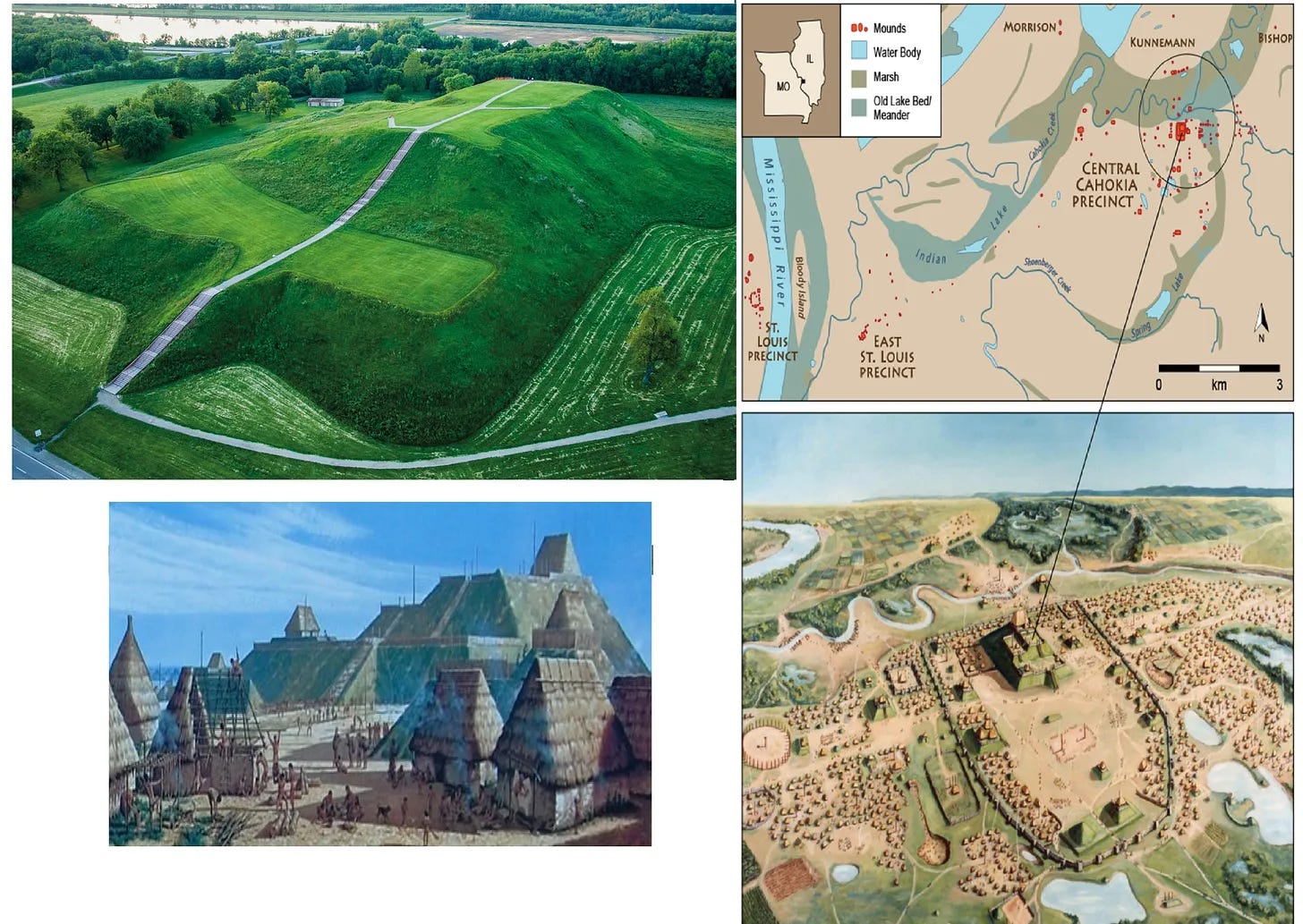

The reason why this line was so adamantly defended in the BAE Mound Survey (1882-1895) was because if the mounds, relics of ancient civilization, did indeed belong to the North American Indian’s past accomplishments, this meant that Lewis Henry Morgan’s theory of mental evolution and his classification of nations upon the basis of affinity of blood would be proven entirely fallacious. This would in turn largely make the entire philosophical and scientific foundation of the field of American anthropology itself…fallacious.
Morgan’s theory of social evolution, emphasised on material and technique derived from the assumption that men in stages of savagery had essentially been entirely shaped by their environment. This theory viewed the “savage” as more closely tied than barbarous or civilized peoples to their material world, in other words, these “scientists” saw only “savages” driven by their base “savagery,” not independent creative agents.
Thus, the defense of the position that the North American Indian took no part in the building of the mounds was to be upheld, or as Gallatin himself, the spiritual father of American Anthropology, preferred to do, pretend that these structures showed nothing “indicative of a much more advanced state of civilization than that of the present” Indians. The public should simply pay no attention to the ancient monuments, which were in any event, fast disappearing in the midwestern march of settlement.
It was this “science” of anthropology, and conscious ignorance of historical explanations through archaeological findings, that governed the Smithsonian Institute’s authority and has shaped what is largely understood as the identity and history of the North American indigenous people to this day.
John Wesley Powell would continue in the same school as Gallatin and Morgan, in encouraging a view of mental evolution that would be its own interpretation, or extension of Darwin’s biological evolutionism.
Curtis Hinsley, writes in “Savages and Scientists”:
“…Caught between a fading human past and an uncertain technological future, anthropologists in the nation’s capital felt a particular responsibility to retrieve that past in order to take a hand in determining and shaping man’s fate. The task seemed monumental and absolutely crucial to them. As Otis T. Mason, first curator of ethnology in the National Museum, explained in 1883, the anthropologist enjoyed a sense of involvement in vital affairs, for he or she participated in the universal quest for the ‘secrets of man’s origin, progress, and destiny.’
…
The men who established anthropology in the National Museum saw their enterprises as a pious endeavor in an age of science and religious doubt; they called themselves scientists, but theirs was as often an aesthetic and religious exercise, and always a moral service to the nation. By displaying order in the tangible works of man through all ages and places, they would confirm cosmic purpose.”
And it just so happened that half of the National Museum’s twenty-seven curators and assistant curators in 1888, those that would participate in the quest to answer the “secrets of man’s origin, progress, and destiny” were detailed from the Geological Survey, the BAE, the Fish Commission, the Army, and the Navy. [8]
Along Powellian lines, Otis T. Mason, in his work for the Smithsonian, would focus on human activities as shaped and modified by the forces of the earth. By using the idea promoted by the Smithsonian creation myths, that spirit was contained in objects, this in turn was again used to promote a Blood and Soil ideology.
[Note: This was also what Carl Jung would promote in his writings. For more on this refer to the series “The Shaping of a World Religion: Carl Jung and The Land of the Dead”]
This theory of mental/social evolution was promoted to the public as something that was not “racist” but was rather “scientific” about its approaches to forming a hierarchy of mankind. Morgan’s theory, which was expanded upon by Powell’s BAE and was in fact the raison d’être of the BAE, as confirmed by the Smithsonian itself,[9] set out to prove why the Native American was not “racially” inferior but represented simply an archaic age of our mental evolution as a species.
Thus, through the lens of Powellianism, Darwin’s biological evolution had aided us in understanding that everything was in fact in a state of constant change, however, unlike Darwin’s biological evolution, the domain of the evolution of mind was not governed by random, chance variants, but was a directional progression through the primary stages of savagery, barbarism and civilization (later enlightenment would be added as a fourth stage).
Through this lens it was thus justified that a natural struggle and survival of the fittest would ensue in the dominion and evolution of “Mind.” The Native Americans represented an early stage of mind that for whatever reason, as argued by the Gallatin, Morgan, Powell school, had never progressed to the stages of barbarism or civilization, if it had it would not represent a “pure” form of savagery which would have put Morgan’s social theory into disarray (this is why suppression of archaeological findings that contradicted this line was vital).
Thus, it was as William Henry Holmes (Powell’s Smithsonian successor) put it, “in the inevitable course of human history the individual races will probably fade out and disappear, and the world will be filled to overflowing with a generalized race in which the dominating blood will be that of the race that today has the strongest claim, physically and intellectually, to take possession of all the resources of the land and sea.” [10]
Sounds very pro-imperialistic, doesn’t it?
In other words, it was the natural course of the Native American to go extinct. They simply had no place in the world of “civilization” and the battle for the survival of the fittest, for their savage minds could not understand the mind of civilization. Hopes of integration and collaboration were destined to be fruitless, the natural course of the Native American according to this view, was to simply die out.
However, the “scientific” study of the archaic mind of the Native American was of vital importance for they were the “key” so to speak of the origin of Mind and represented a tremendous opportunity.
Thus, Powell would focus on the collection (with very liberal interpretation) of the creation myths, the origin myths of indigenous tribes of North America. As Schoolcraft said in his speech to the “white Iroquois” of Morgan’s freemasonic Order of Iroquois, “No people,” Schoolcraft warned, “can bear a true nationality, which does not exfoliate…from its own bosom, something that expresses the peculiarities of its own soil and climate.” [11]
But this would not change the fact that America was to be “the tomb of the Red man” in Schoolcraft’s words. Thus, the American history would be made up of a romantic view of what it was to be an “American” in the vast and beautifully wild and untamed terrain but it was to be viewed as an archaic past, a past that would play no role in the future.
[Note: The collection of the origin myths would also allow for the next level of psychological/cultural/religious warfare that would be waged on the North American Indian. Apparently they thought it was their natural fate to die out, yet a gigantic push in that direction couldn’t hurt… For more on this story see Part IV of “The Shaping of a World Religion”]
Hinsley writes:[12]
“Like Otis Mason, Powell celebrated the human mind; it was always the primary focus of his inquiry. Mind became for him the generative force in man’s evolution, the process behind the human products and activities that anthropologists studied. Man’s mind set him above the rest of the universe. Powell intended to trace the development of mind from the most primitive savages to Washington scientists. Material culture, kinship systems, languages, folklore – all were inherently interesting, but they were ultimately only the data of the science, the outward manifestation that revealed the operations of an underlying agency.
…The point of Powell’s philosophical excursions was to show that the generative mechanism of evolution came not from without but from within…[However] Powell never questioned the validity of biological science itself. Biology under the genius of Darwin and Thomas Henry Huxley accounted for the highest attainment of the century…[the] steady progress to a higher life.
… According to Powell’s scheme, primitive man, originating at a single locus, or possibly a small number of centers, had also followed biotic laws, differentiating into varieties characterized by skull, skeletal, skin, hair, and other physical peculiarities. Races of men had formed early. Had the trend continued, distinct species would have resulted. But at some critical point in human history, differentiation was checked and man assumed control of his evolution. From this point, which occurred at different times for different peoples, man began the long, slow return to homogeneity through cultural evolution.” [emphasis added]
In 1877, Powell would write to Lewis Henry Morgan:[21]
“I have many facts which fit perfectly into the system which you have laid out: the beating of these facts I did not understand before. Had I more fully appreciated your system, I believe I could have given you much additional data…After reading your book, I believe you have discovered the true system of social and governmental organization among the Indians.” [emphasis added]
Hinsley writes:[22]
“Powell never stated his debt to Lewis Henry Morgan more explicitly than in the above passage of 1877, but he envisioned BAE anthropology as the fulfillment of the work begun so promisingly with Ancient Society [author’s note: Morgan’s book, treated as the bible of the Smithsonian]. Morgan’s famous three-stage scheme of social development – through savagery, barbarism, and civilization was handy, current, and authoritative when Powell founded the Bureau in 1879. Above all it was a stem, and as many observers have noted, Powell owed a large intellectual debt to the Rochester sage [Lewis Henry Morgan].
…The emphasis on the elaboration of ideas marked a strong teleological strain in Morgan. Indeed, he claimed to see ‘unconscious reformations’ toward a future social ideal that humanity was approaching.
For Morgan, history ultimately ‘was enacted through people with a common ‘principle of intelligence’ seeking ideal standards invariably the same,’ The history of society was, in short, all part of the grand plan of the ‘Supreme Intelligence’.
Ancient Society traced that plan. Morgan followed man’s cultural growth through savagery and barbarism (each subdivided into lower, middle, and upper planes) to civilization…The ‘real epochs of progress,’ he advised Joseph Henry [who served as the first secretary of the Smithsonian] in 1873 ‘are connected with the arts of subsistence which includes the Darwinian idea of the “struggle for existence”.’
Without enlarging the basis of subsistence, man could not have propagated and dominated the globe; it followed that ‘great epochs of human progress have been identified, more or less directly, with the enlargement of the sources of subsistence.’
Morgan defined his ‘ethnical periods’ through subsistence arts, then correlated social and political institutions to the fundamental classification…Each level possessed its characteristic forms of government…”
Thus, Morgan essentially created a “science” that would justify imperialism and feudalism as the highest, most excellent, evolutionary course of human Mind and Civilization. Rather convenient…
By the middle of the 1870s, when Powell was doing his field work, Morgan was the recognized dean of American anthropology. Ancient Society, his enduring theoretical contribution to the science, confirmed his eminent position. “It is not one of the least results accomplished by Mr. Morgan,” Powell wrote in 1880, a year before Morgan’s death, “that he has gathered about him living disciples who are reaping harvests from fields planted by himself.”[13] Powell stood foremost among those followers.
The Smithsonian has never strayed from this original mission…
Cynthia Chung is the President of the Rising Tide Foundation and author of the books “The Shaping of a World Religion” & “The Empire on Which the Black Sun Never Set,” consider supporting her work by making a donation and subscribing to her substack page Through A Glass Darkly.
Also watch for free our RTF Docu-Series “Escaping Calypso’s Island: A Journey Out of Our Green Delusion” and our CP Docu-Series “The Hidden Hand Behind UFOs”.
Footnotes:
[1] Anton Chaitkin. Treason in America (1984). pg. 400-401.
[2] Paul Glumaz, Lewis Henry Morgan and the Racist Roots of Anthropology (2004). 21st Century Science Journal.
[3] Lewis Henry Morgan, League of the Iroquois, pg. 23-24.
[4] Curtis M. Hinsley. Savages and Scientists: the Smithsonian Institution and the Development of American Anthropology 1846-1910. (1981) Smithsonian Institution, pg. 20.
[5] Anton Chaitkin. Treason in America (1984). pg. 409-410
[6] Anton Chaitkin. Treason in America. Pg. 294
[7] Anton Chaitkin. Treason in America. Pg 413
[8] Curtis M. Hinsley. Savages and Scientists: the Smithsonian Institution and the Development of American Anthropology 1846-1910. (1981) Smithsonian Institution, pg. 95.
[9] Curtis Hinsley’s “Savages and Scientists” made no secret of this fact and acknowledged this frequently throughout its history of Powell’s BAE years.
[10] William Henry Holmes “Random Records of a Lifetime”, Chief of the Smithsonian Institute’s Bureau of American Ethnology (John Wesley Powell’s successor), head curator of anthropology at the U.S. National Museum, chairman of the Division of Anthropology of the U.S. National Museum, director of the Smithsonian American Art Museum.
[11] Schoolcraft’s speech, An Address, Delivered before the Was-Ah Ho-De-No-Son-Ne, or New Confederacy of the Iroquois, by Henry Ro. Schoolcraft, a Member: at its Third Annual Council, August 14, 1846.
[12] Curtis M. Hinsley. Savages and Scientists: the Smithsonian Institution and the Development of American Anthropology 1846-1910. (1981) Smithsonian Institution, pg. 126-133.
[13] Curtis M. Hinsley. Savages and Scientists: the Smithsonian Institution and the Development of American Anthropology 1846-1910. (1981) Smithsonian Institution, pg. 135.




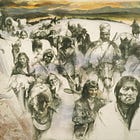
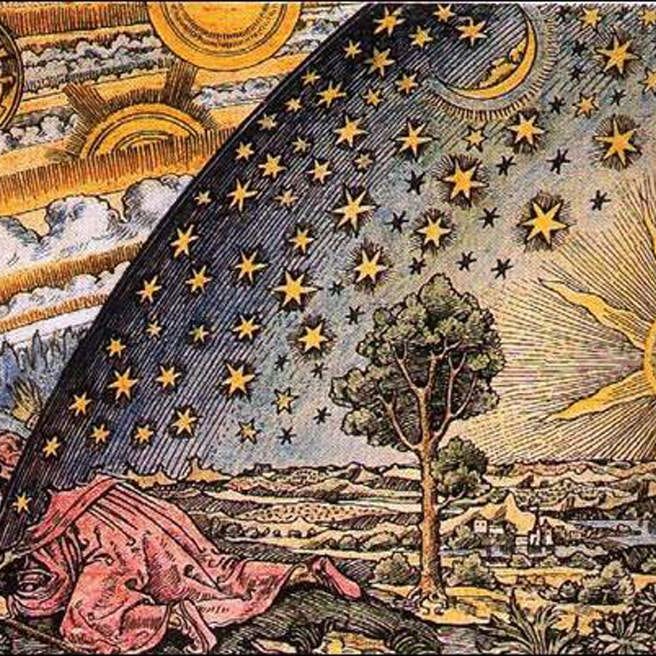
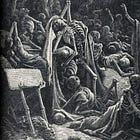
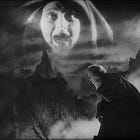
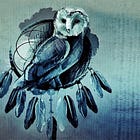

The “intellectuals” have an adversarial approach to nature, to dominate, and those who dominate nature advocate for the domination of mankind, by dent of their “Supreme Intelligence”. They cannot countenance the concept of the primal motive of working with nature as stewards of the land, yet hypocritically ram the buzz word “Sustainability” at you as though it were dogma. The Malthusian based inspiration for their hubris leans heavily on left brain reasoning forgoing the balanced intelligence of ‘knowing’ what is appropriate behaviour achieved by generational knowledge and instinct. To quote the IChing, “There is always something ponderous and one sided about the learning of the self-taught “
There is one major misconception, when discussing primitive and advanced races. I contend that any apparently 'primitive' group is not primitive because it hasn't evolved yet, quite the converse is true. There is a constant falling away from higher levels, they are retreating or devolving. When you have a society that practices cannibalism or infanticide or even weak family structure, it is on the way down and left unchecked it will dwindle to extinction. To be replaced by another group that hasn't yet chosen the path of decay.